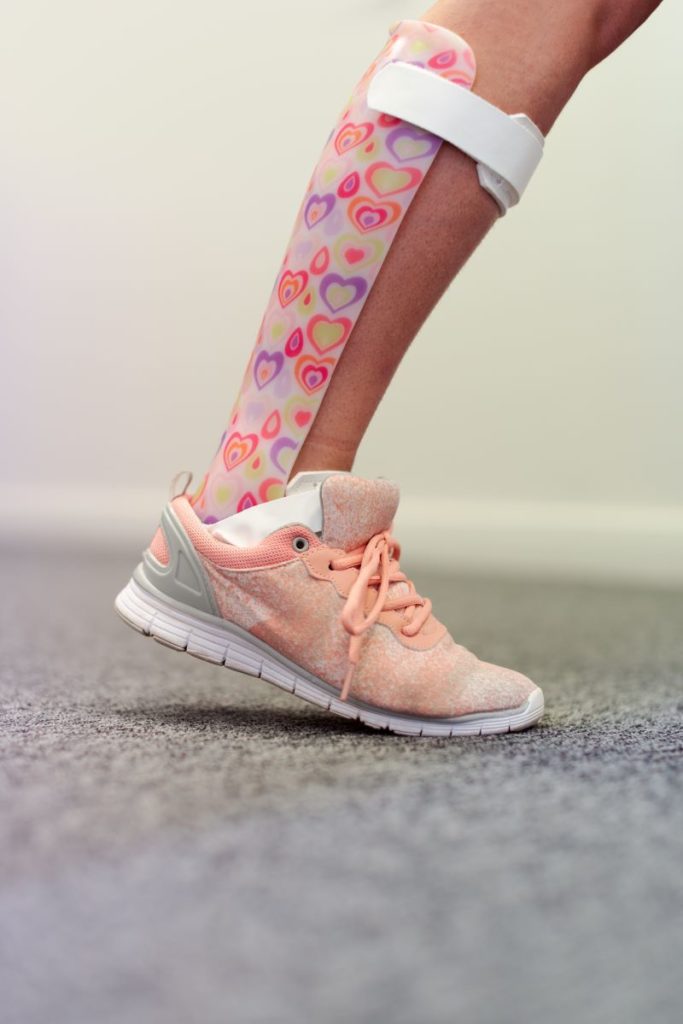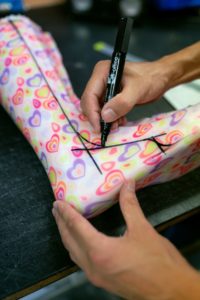What is an AFO and how does it work?
An Ankle Foot Orthosis (AFO) is a type of foot splint. It assists in keeping the leg stable by helping with correct alignment of the ankle. For example, some people have trouble keeping their ankle bent when they walk, which can lead them to trip over their own feet. An AFO can hold the ankle in the right position to stop the foot from dragging. Wearing an AFO may improve balance, reduce the risk of falling, assist weak muscles of the leg and improve walking.

What sort of conditions is it suitable for?
Different conditions impact people in different ways. If you have a condition that causes instability in your knee or ankle (eg you trip over your feet or your knee flicks back when you walk), you may benefit from an AFO. Some of the clients we have seen that have benefited from AFOs include people with;
- Multiple Sclerosis
- Stroke
- Cerebral Palsy
- Spinal Cord Injury
- Peripheral Neuropathy
- Muscular Dystrophy
- Traumatic Brain Injury
- Charcot-Marie-Tooth Disease
Who prescribes and fits an AFO?
Your physiotherapist may recommend an AFO for your condition. Before paying for a custom AFO, your therapist may recommend you trial an “off-the-shelf” AFO. These are a relatively inexpensive way to see if an AFO is right for you. If the trial is successful, your physiotherapist will likely recommend a custom AFO.
An orthotist/prosthetist prescribes, makes and fits custom AFOs. At Sunshine Coast Neuro Rehab we closely with local orthotists such as Sunshine Orthopaedic Services and DPO. If we think it is helpful, and with your permission, we may come with you to your appointment to work with the orthotist to help find the best solution for you.

Are there different types of AFOs?
Yes, there are different types of AFOs. Difference can include;
- Material they are made of – plastic vs carbon-fibre.
- The position they provide support – some will provide support from the back of the leg, others will provide support through the front of the leg.
- How much stability they provide. Some AFOS have a hinge to let you bend your ankle.
- How they are worn. Most AFOs are worn inside a shoe, but some will be worn without a shoe.
- For plastic AFOs there is a choice of colours.
AFOs are customised for each individual.
If you would like to know more about if an AFO may be beneficial for you, talk to your physiotherapist or give us a call to make an appointment on 07 5448 1155.
Neve Cavanagh, Physiotherapist, APAM
Other Useful Websites
https://www.physio-pedia.com/Introduction_to_Ankle_Foot_Orthoses
https://www.childrens.health.qld.gov.au/fact-sheet-ankle-foot-orthosis/
References
Daryabor A, Arazpour M, Aminian G. Effect of different designs of ankle-foot orthoses on gait in patients with stroke: A systematic review. Gait & posture. 2018 May 1;62:268-79.
Totah D, Menon M, Jones-Hershinow C, Barton K, Gates DH. The impact of ankle-foot orthosis stiffness on gait: A systematic literature review. Gait & posture. 2019 Mar 1;69:101-11.
Foot and Ankle Associates of North Texas. AFO – Measuring Leg Size . Available from: http://www.youtube.com/watch?v=gwVl_LipyGg[last accessed 22/6/2021]
NHS Greater Glasgow and Clyde. NHSGGC – Orthotics Patient Information: Fitting AFO to self . Available from: http://www.youtube.com/watch?v=Ws88kuZYcyk[last accessed 22/6/2021]
